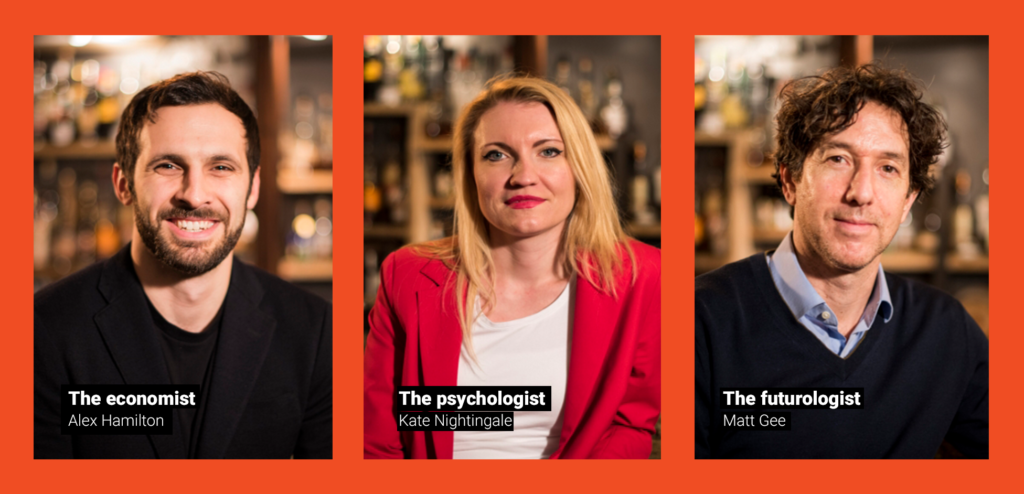2016 was a year of political and economic turmoil. And 2017 looks set to be just as unpredictable. With KPMG/IPSOS Retail Think Tank forecasting cost rises of between 5-8% this year, set against a backdrop of continued uncertainty, brands and retailers need to think carefully about where to focus in order to protect their margin and emerge as one of the success stories of this period.
At eCommera, we brought together three experts – economist Alex Hamilton of Retail Week, psychologist Kate Nightingale of Style Psychology, and futurologist Matt Gee of Isobar – for a lively discussion around where brands and retailers should invest their time and money in 2017 in order to thrive in the years to come.
One of the key points that emerged from the debate was on the importance of defining a clear value proposition. Here we take a look at what our experts had to say.
A conceptual shift in the notion of value
Alex kicked off the discussion on value, ‘consumers have redefined the way in which they see value.’ Indeed, in times of uncertainty, ‘retailers need to understand that consumers are looking for value when they spend. They’re spending less on retail, so therefore to try and get that share of wallet brands and retailers need to be a lot more focused at what they do.’
But value for customers is no longer just about price. As Kate explained, ‘value for one person might mean a quality of fabric or durability, for another person it might mean the fit with their identity, for another person it might mean that they will represent themselves better at their work.’
Brands and retailers should therefore think carefully about their customer base and really analyse why people choose to shop with them, i.e. the value their brand represents for consumers. Kate summed this up, ‘unless you’re going to understand why your customers are buying that particular product, you’re not going to be able to communicate to them or personalise in an effective way so they can actually engage with your brand and with the product, and have a value perception that justifies the price you’re asking them to pay.’
The value equation
At the same time, brands and retailers also need to carefully consider the value that a particular initiative adds for the business, and not just the customer. Matt sums this up, ‘I think it’s an equation. From a business perspective as well, that equation has to be balanced. So how do we create greater value for the consumers whilst also creating value for our business?’
For Kate, commercial effectiveness is a side effect of an amazing customer experience. However, Matt cautioned that brands and retailers should look at the end-to-end processes and operations required to implement new experiences.
‘If you put an experience in place that’s great for a consumer (which everyone wants to do) that may mean that you’ve got to change your processes and operations on the business side to enable that to happen effectively. So I think the Holy Grail is trying to find the solutions that tick both boxes – that is providing a better experience for customers whilst at the same creating operational efficiencies for the business.’
Building your value proposition
All of this highlights the importance of having a strong value proposition.
As Matt points out, brand purpose is a key facet of your organisation’s value proposition – and this comes really strongly into play at times of uncertainty. ‘We’ve seen it in historical cycles in the past and I think both retailers and consumers are feeling this. So buying into more than product becomes a more important decision-making process. Retailers need to think beyond the short term and think more about the lifetime value and how they can use these opportunities to take advantage of building those relationships.’
So how can brands and retailers respond? If you’re not clear on what unique value you are offering your customers – neither are they. Start by asking ten people within your organisation what they feel this is – if you don’t get the same answer ten times, then you should revisit your value proposition. If you do, run the same exercise, on a larger scale, with your customers.
And once you have a clear value proposition and brand purpose, ensure you communicate it at every opportunity. Think about every touch point you have with your customers and ask yourself – how does this communicate our brand value? Innocent does an excellent job of this. Their value proposition in central on the homepage and evidence of how this is ‘lived and breathed’ is ubiquitous – from their use of food-grade recycled packaging to the names of the smoothie flavours themselves.
Find out more
Watch video highlights from the debate and download the full report here.






